The complexity of intelligent air combat and subversion of traditional perceptions
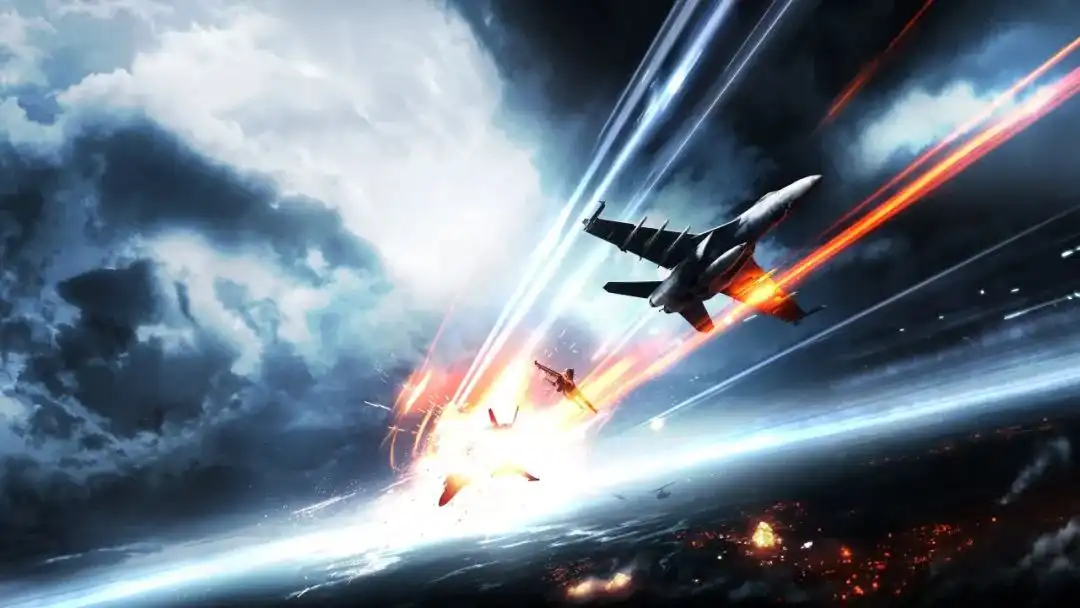
With the rapid development of intelligent science and technology, fundamental changes will take place in air combat in the future, mainly manifested as cognitive confrontation with artificial intelligence as the core and integrated operations characterized by "intelligence +" or "+ intelligence". As a result, the operational dimension expands rapidly, the influencing factors gradually increase, the tactical and technical indicators and efficiency show a geometric growth, and the form of air confrontation is accelerated to intelligent evolution. The future air combat system will give more prominence to the confrontation of "intelligence", emphasize the use of "integration", rely on the support of "technology", multi-domain integration, cross-domain attack and defense, unmanned combat, system confrontation, and intelligent air combat with the integration of virtual and physical space. it will be shown in the future air combat. These subversive changes make air combat face a series of problems, such as high complexity of environment, strong antagonism of game, high real-time response, incomplete information, boundary uncertainty and so on, which lead to the reconstruction of battlefield ecosystem and complete change of winning mechanism in future air combat. Confrontation mode is more autonomous. Therefore, we must re-examine the development and changes of air combat from the perspective of complexity, form intelligent superiority, master battlefield superiority, and win the war.
Intelligent air combat will show complexity characteristics
Based on complex system theory, intelligent air combat systems have three important characteristics, namely emergence, adaptability and uncertainty. These three characteristics are also the key to our analysis of the complexity of future intelligent air combat.
emergent properties 涌现性就是系统内的子系统遵从局部规则,在持续交互过程中,以自组织方式产生出新的整体性质的过程,即实现“1+1>2”的过程。这就意味着系统功能不再是子系统的简单叠加,而是规则约束下的随机选择,由此涌现性带来复杂性。智能空战系统作为一个复杂系统,各作战单元依靠动态组网技术进行灵活、动态、多样化的自由组合,实现功能上的更新。在规则约束下,空战系统就会朝着满足战争需求的方向不断进化与演变,实现整体性涌现,这种结果是规模效应和结构效应共同作用的结果。例如,不同型号和数量机型的组合就会产生不同的作战功能,达到不同的作战效果,而这些功能和效果并不是靠各机型的物理叠加实现,通常会展现出全新的整体效能。所以,基于智能系统的空战实现功能迭代增强的同时也增加了空战的复杂性。
self adaptability 自适应性就是系统能够根据环境不断调整,通过自主学习、自我修复、自行演进实现结构的改变,从而改变其性质和功能。智能化空战由于“智能”的融入,具备了学习、记忆、反馈、调整等能力,能够根据外部环境的变化自动地组织战争系统结构,也能够依靠内部某些规则自主地协调各子系统的行为,从而实现新的作战效能。2015年,美国防高级研究计划局提出了体系综合技术和试验项目,旨在通过武器/平台集群的动态自适应架构设计,实现面向任务的自组织进化、自我管理、自动任务分配以及自主任务规划,形成灵活自主的作战能力。未来智能化空战的主要特性之一就是自适应性,这个自适应性表现为对战场环境的自主感知,对作战系统结构的自动调整,以及在战争过程的自我学习上。自适应性让战争系统结构变得动态可调,战法更加灵活多变,这也就带来了战争的复杂性。正如美国圣塔菲研究所的霍兰教授认为适应性造就了复杂性,如果没有系统的适应性,就没有系统的复杂性。

War is a fog, and people always try to uncover the fog through various methods and means
uncertainty of 战争是一团迷雾,人们总是试图通过各种方式和手段揭开迷雾,看清战争的本质,但是却又始终无法拨云见日,仿佛迷雾无穷无尽,人们“看不清”的原因就是战争具有真实存在的不确定性。智能化空战是体系与体系之间的交互,其中既有体系内部的合作也有体系间博弈。合作意味着信息共享、自主协作、互联互通,但是合作的前提是空战系统的深度融合,也就是说融合的深度决定了合作的程度。在融合过程中,技术的因素较为确定,人的因素是最为不确定的,两者的融合过程必然是不确定的。博弈意味着尔虞我诈、激烈对抗、生死较量,这一切都存在着不确定性。特别是对抗双方相当的时候,博弈的不确定性是最大的,如果差距很大,结果一目了然,不确定性则会大幅减弱。不管是合作还是博弈,在智能化空战中贯穿始终而又能被我们确定的就是不确定性,而这种不确定性就导致了战争的复杂性。
Intelligent air combat subverts traditional air combat perceptions
The above three characteristics are superimposed and jointly drive the exponential and explosive growth of the complexity of the intelligent air combat system, which will inevitably subvert people's basic understanding of traditional air combat.
autonomous evolution 进化是战争和作战体系发展的鲜明特征。机械化时代的空战强调火力主导,追求以物载能、以物释能,进化的核心是武器装备,通过提高载荷、增强机动和提升弹药威力等物质属性,获得空战优势。信息时代的空战强调信息主导,追求以网聚能、以网释能,进化的核心是信息网络,通过信息网络建立“从传感器到射手”的无缝信息连接,实现体系化网络化作战能力。智能化时代的空战强调智力主导,追求的将是以智驭能、以智制能,进化的核心是类脑系统,通过自演进智能算法自主实现OODA环的快速并行运转,促使杀伤链向杀伤网的演进,获取全面空中优势。这种进化突破了以往物的单一层面和以人为主的被动式进化模式,进入到自主进化的主动式阶段,人在其中的作用由控制转变为监督。届时空战系统将具备类似生命体的特征和机能,能够根据环境、威胁、对手等的变化,通过构建的众多模型和先进算法,快速形成策略、展开行动,并且在战争中能够不断通过学习、记忆、反馈、调整的反复循环实现自我修正、优化完善和自主进化,成为可进化的类生态和博弈系统。随着智能技术的持续升级,自主进化将贯穿到侦察、感知、决策、指控、打击、保障等各个环节,起到了倍增、超越和能动的作用。这些进化会使空战体系具备复杂环境条件下的博弈对抗和竞争能力,将全面重构整个战场的生态系统,涌现出不可思议的力量,促使人们从更高维度审视评估作战能力和效果。
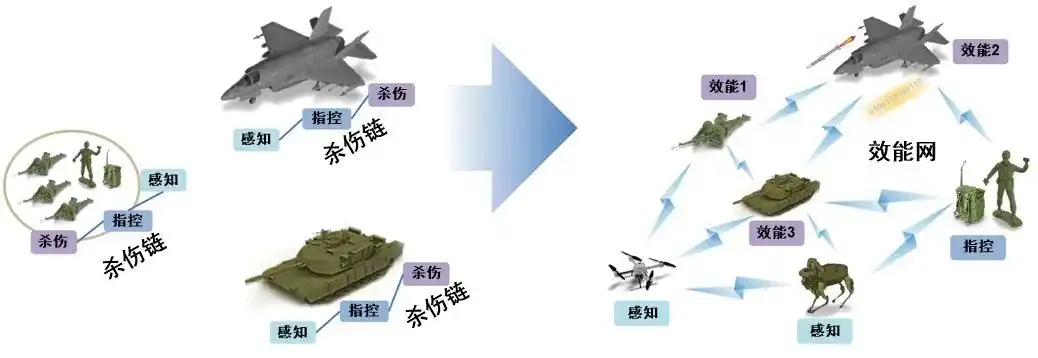
Schematic diagram of the transformation of kill chain into kill network
a decentralized 机械化时代的空战是平台中心战,强调以平台为中心的通信力、防护力、机动力、火力等战力的集成。这一时期的空战模式是典型的“有中心”。这些平台遭到打击,整个作战体系就会崩溃。信息时代的空战是网络中心战,支撑作战体系主要是集成芯片、网络通信、数据库等新基建技术,强调的是将空中武器平台的中心功能分散化,通过建立非中心节点,实现平台功能转移,以强化攻防能力。相对于平台中心战来说,信息时代的空战是多中心或弱中心。但是通过各种手段发现并打击这些非中心节点,亦会造成整个作战体系效能的降低,甚至瘫痪。智能化时代的空战是认知中心战,支撑作战体系主要是无人控制、人工智能、大数据、云计算、量子通信、区块链等颠覆性技术,强调的是以认知决策为中心的分布实时杀伤。智能化时代的中心与机械化、信息化的中心不同,是一种泛化的概念,可以说战场上任何一个空中武器平台可能就是中心,它具有不确定性、可迁移性,这样整个作战体系便实现了无中心,一旦某一节点遭到毁伤,对整个作战体系的影响将会是微乎其微的。空战从有中心到弱中心再到无中心的发展路径,需要人们转变认识,树立开放、主动、创新的理念,迎接智能空战时代的挑战。
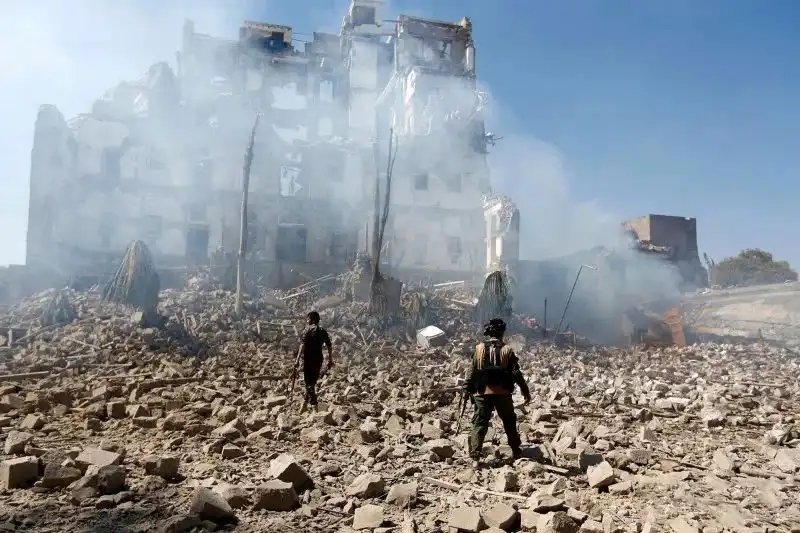
Houthi militants used drones and missiles to attack a large oil facility in the southern Saudi city of Jizan at night
unmanned 无人化是人类智慧在作战体系中的充分前置,是机械化、信息化、智能化融合发展的集中体现。无人机并不是新鲜的事物,1917年就已经问世了,其作战运用从一战二战期间的靶机,到越南战争中的战役战术侦察任务,再到海湾战争中的侦察、诱饵、干扰、窃听等多种用途,直至阿富汗战争中“察打一体式”的精确斩首,实现了无人机空中作战的突破。总的来说,这段时期的无人化空战处于有人为主、无人为辅的初级阶段,是以人进行完全控制和主导的作战行为。信息网络技术的发展赋予了无人机空中作战崭新的面貌,无人蜂群作战逐渐成为更加贴合需求、更具费效比的新型作战平台。2018年1月,叙利亚反对派武装以山寨无人机集群袭击俄罗斯驻叙利亚赫梅米姆空军基地;2019年9月,也门胡赛武装采用18架无人机及7枚导弹协同集群作战,袭击了沙特阿美石油。这些战例中无人机的作战运用都展现出小微型无人机集体决策、自主修正、自适应编队自主协同飞行能力。这也意味着无人化空战进入到有人为辅、无人为主的中级阶段,是以人有限控制、辅助指挥,平台自主行动的作战行动。未来随着人工智能技术的成熟,无人化作战体系自主能力迅速增强,无人化空战将向自主、集群、分布式协同等方向快速发展,同时指挥控制实现了不同程度的智能化,自主决策能力大幅提升,将大大压缩OODA的循环时间,效率明显提升。无人化空战将步入规则有人、行动无人的高级阶段,是人设计游戏规则,行动完全交由无人作战平台自主执行的作战行动。这种从“人在回路中”到“人在回路外”的转变,也许是颠覆人们传统空战认知的最直观之处。
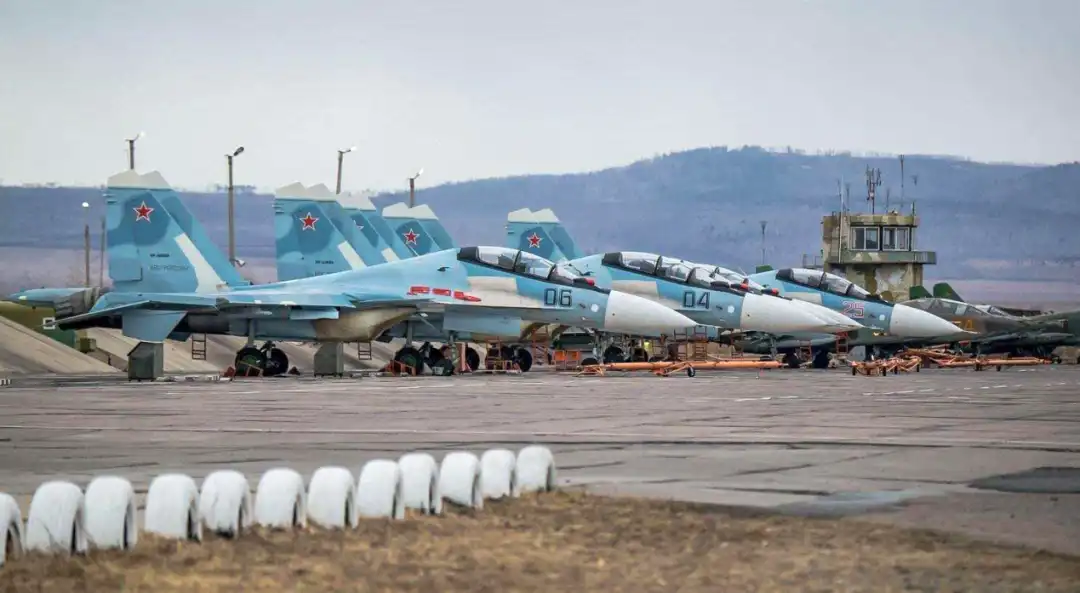
Russia's Khmeimim Air Force Base in Syria
Cross-domain integration 机械化时代的空战,各种空中武器平台之间属于机械式组合,空战模式相对单一,空战过程的程序式较为明显。信息化时代的空战,有了网络技术的支撑,各种空中武器平台之间形成了松散式协同,突破了单一空战模式,空战过程也体现出一定的非线式。在智能化技术成果的支撑下,跨域融合逐渐成为空战的主要发展趋势。2020年,美军提出将联合全域作战,作为美军未来的主要作战形式,随后美空军发布了《空军条令说明1-20美空军在联合全域作战中的作用》(以下简称《条令说明》),阐述了美空军在未来联合全域作战背景下,在观察、判断、指挥控制、行动各环节中意图发展的能力。从《条令说明》中可以看出,决策是核心环节,要达成的优势有3点:一是将决策转化为行动的速度;二是跨域运用各要素的能力;三是与合作伙伴协作的能力。其目的是发展跨军种跨领域的联合作战能力,形成多域对单域的能力优势。这就意味着未来智能化空战不再囿于空的限制,而是实现物理、信息、认知、社会、生物等功能域之间的跨域多源感知、异构信息融合、作战数据交链;陆、海、空、天等地理域之间的跨域联合打击、跨域协同防御、多域一体化保障、武器装备互操作等,空战的面貌将被彻底改写。
combination of virtual and real 传统空战的战场主要存在于物理空间,强调的是对对手武器装备的实体摧毁。随着时代的进步和科技的发展,空战空间逐步从物理空间拓展到虚拟空间。虚拟空间狭义上主要是指网络空间,在近几年的军事冲突中,网络空间的地位不断上升。据媒体统计,从2022年2月24日乌克兰危机爆发后,乌克兰已经遭受了3000多次分布式拒绝服务攻击,导致网站瘫痪、数据被擦除,电信基础设施经常性中断服务,迫使乌政府临时切断互联网。目前基于网络的虚拟空间攻击已具备物理毁伤能力,军事发达国家的网络攻击已具备入侵、欺骗、干扰、破坏等作战能力,网络空间已经成为未来空战不可或缺的重要战场。未来,随着虚拟仿真、混合现实、大数据、智能软件的应用和发展,物理空间与虚拟空间的攻防将平行开展,达到虚实结合、以虚制实、以虚制胜的目的。这些将成为未来智能空战模式的重点发展方向。
Thoughts on the future development of intelligent air combat
At present, information-based warfare is taking shape and intelligent warfare is beginning to take shape. How to fight air combat in the future? From the perspective of complexity science and epistemology, and grasping the disruptive changes brought about by intelligent technology, there are the following development trends in intelligent air combat in the future.
Cloud network support, rapid decision-making 作战云是智能化空战的有力支撑,它通过远程服务器网络储存和处理机密军事数据,并通过网络提供各种服务。在空战中,通过云技术高度共享多域多维作战数据,实现跨域多源感知、异构信息融合,为分散部署的作战单元进行有机重组,按需分配资源。各个分散式部署的空中力量在云的支撑下,自身可以成为作战体系中的一个节点,向云提供信息的同时,从云获取信息,形成了信息获取、回传、处理、决策、分发、反馈这一动态闭环,确保对战场态势信息的实时感知、精准掌控,互联互通、高效处理。在云网支撑下,指挥控制、侦察监视、任务规划、机动协同与射手打击等能力深度融合,指挥系统结构由中心化的紧密耦合型组织向去中心化的松散耦合型组织演化,指挥控制方式由集中指挥、分布执行向分散指挥控制演化。指挥机构利用云端信息,智能辅助进行海量数据分析,并将更大的数据共享权赋予作战单元,结合各类空中平台和弹药的优势,实现快速决策,实施跨域一体化指挥,将大幅提高空中作战行动的灵活性和自主性。
Multi-dimensional integration, integrated attack and defense 随着人工智能与其他学科交叉融合,基于人工智能的多维融合、一体攻防,将成为智能化空战一个明显走向。多维融合代表了一种基于能力而非基于军种的思维方式,它强调非对称作战,通过不同维度的能力互补而非简单叠加,使各维度之间互补增效,从而建立优势,获取完成任务所需的行动自由。多维融合意味着能力多元化,这也是空战中获取非对称优势,对敌实施一体化攻防的关键。用多维融合的方式构建空战作战体系,实现一体化攻防,需要实现各维战场之间极高的整合度,打破纵横交错的层级壁垒,破除条块分割式组织模式,改变程序流程式作战模式,通过统一战场态势感知、标准数据信息交互,彻底打通信息传递的链路,破除力量联合的障碍,实现战场信息多维融合、群组力量分布作战、跨代平台联合增效。
Virtual and real interaction, intelligent interaction 智能技术使得作战行动与虚拟空间的深度交互成为可能。未来空战中虚拟空间发挥的主要作用为:整合分散配置的空中作战力量,形成网络化体系化作战能力;成为双方对抗的主战场和基本依托;建立虚拟战场,进行战法检验,形成以虚制实能力。例如,运用兵棋推演系统,依据想定和相对真实的实力数据建模,对交战过程进行仿真推演,从而评估战法的优劣和武器装备的效能。通过构建一个虚拟的智能化军事人工系统,输入不同环境、对手的实力数据,开展对抗活动,并不断收集和积累对抗结果和数据。通过智能系统的自主进化、自我修正,不断优化迭代,最终形成一套较为可靠的算法和可持续进化的系统,用于展开模拟攻防,进行战法演练、概念验证、装备效能检验等,支撑物理空间的实际作战,从而达到虚实互动、智能交互、以虚促实、虚实对决、以虚制胜。
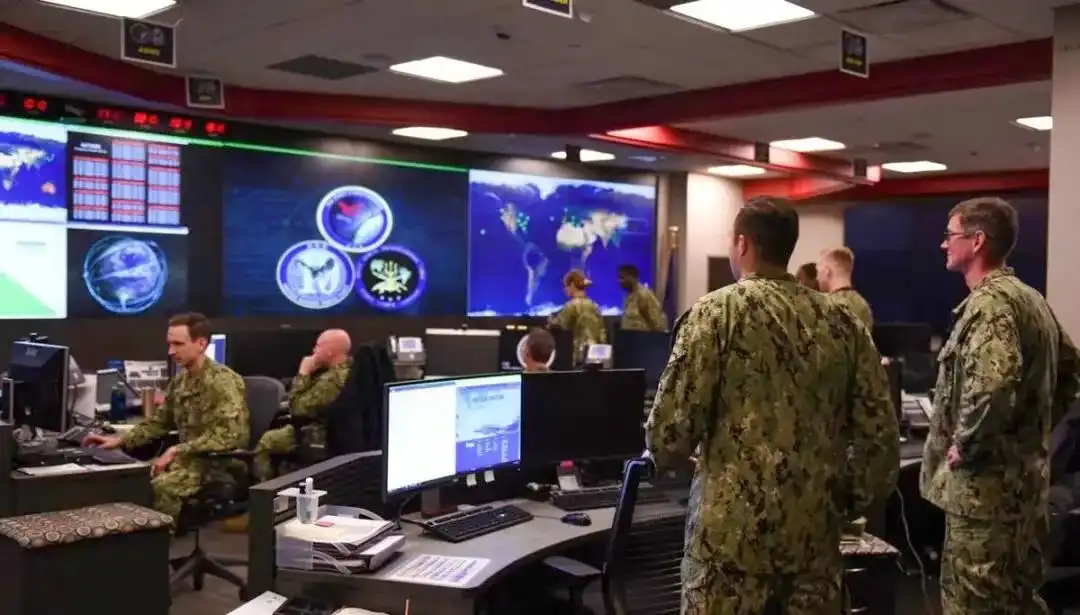
Establish a virtual battlefield and carry out simulated attack and defense to achieve victory with illusion
Heterogeneous fusion, system optimization 在多维融合理念指导下,利用云网技术支撑,借助虚实互动,空战力量通过异构融合式自主建群释放作战效能,将成为智能化空战的主要运用模式。
In February 2023, the US Department of Defense launched an autonomous multi-domain adaptive bee swarm project to develop autonomous groups of drones that can be launched from the sea and air and land to overwhelm the enemy's air defense system. This project indicates that in the future air combat will replace complex, multi-purpose, and high-value combat platforms with a large number of low-cost intelligent weapons, and exchange quantitative advantages for quality advantages, through independent formation and efficient cooperation, enhance the adaptability and diversity of their own missions, while increasing the defense cost of the other side, so as to obtain an overall combat effect. At the same time, intelligent technology gives air combat platforms more autonomy, breaks the technical barrier of interaction between different types of air combat platforms, promotes the evolution of combat units from isomorphic combination to heterogeneous integration, and the air combat mode will be iteratively increased. to achieve multi-dimensional distribution and system optimization. The purpose of system optimization is to "use the best", to aggregate the limited combat capabilities, no matter how the opponent changes, through dynamic fusion, gathering energy, to achieve a high degree of integration of combat units and platforms, efficiency transition, optimal energy release, to achieve the system to win.
Conclusion
In the future, the battlefield environment will be highly complex, the combat situation will change rapidly, the confrontation between the two sides will be extremely fierce, and massive information will be merged. The complexity of war will be unprecedentedly enhanced. Although with the technical assistance of artificial intelligence, human labor will be greatly reduced and war will be simplified. The complexity does not mean that war will become simpler. The complexity of war is an inevitable attribute of war, and intelligent systems can only quickly and accurately find the laws of victory from complex air wars. Therefore, intelligent technology will inevitably lead to the continuous iterative evolution of the air combat model, but the uncertainty, emergence, non-linearity, etc. in air combat cannot be eliminated. At present, only by always adhering to studying intelligent air combat from a complexity perspective and outlining a feasible application model for future intelligent air combat is a new idea to win air superiority.
copyright notice:This article was published in the first issue of Military Digest in 2024. The author:Kang Daming, Zhu Zheyi, If you need to reprint it, please be sure to indicate "Transferred from Military Digest".
attention to our

